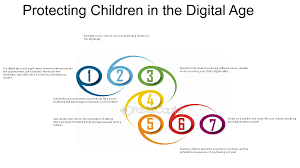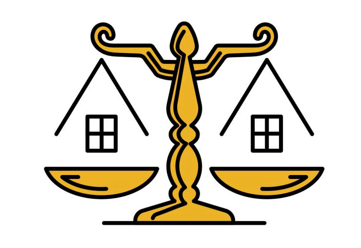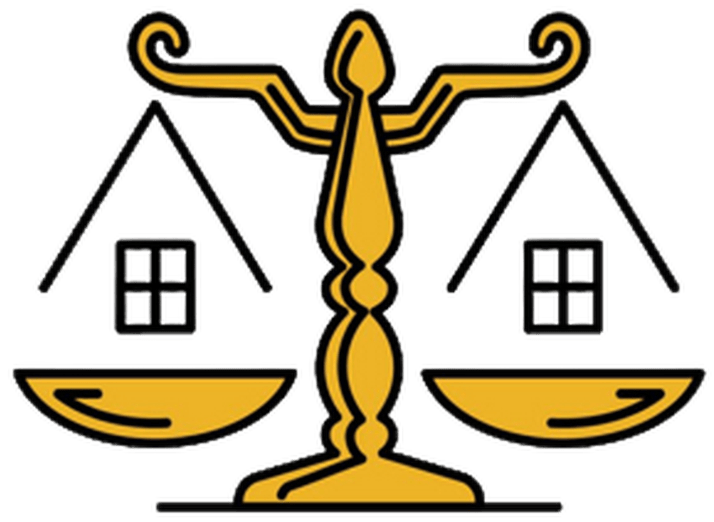


Crucial Shield: Essential Child Online Protection Laws are Saving Our Kids from Digital Dangers
Introduction
Child online protection laws are crucial in ensuring the safety, privacy, and well-being of children as they navigate the complexities of the internet. This article explores the significance of child online protection laws, their implementation, challenges, and the evolving landscape of digital safety for children.
The internet has become an inseparable part of modern childhood. From learning platforms and online classrooms to interactive games and social media, children today are exposed to the digital space earlier and more extensively than any generation before them. While this digital inclusion brings about numerous opportunities for education, creativity, and global interaction, it also introduces significant risks that threaten the safety, dignity, and well-being of children.
These risks are not merely hypothetical—they are real, persistent, and rapidly evolving. Inappropriate content, online grooming, cyberbullying, data exploitation, sextortion, and identity theft are just some of the pressing dangers that children face in their digital interactions. As a result, societies across the world have increasingly recognized the urgent need for legal safeguards designed specifically to protect children in the digital environment.
This growing awareness has led to the development and adoption of Child Online Protection Laws, which seek to create a structured legal framework that shields children from harm and empowers stakeholders to ensure that digital environments remain safe and nurturing.
In many developing countries, including Nigeria, where internet penetration is on the rise and the average age of digital exposure is decreasing, the necessity for such laws has become even more pronounced. Children are active users of digital technologies, yet they lack the cognitive and emotional maturity to navigate the complex and often hostile terrain of cyberspace. Without strong legislative protection, children are left to fend for themselves in an environment filled with invisible predators, manipulative algorithms, and content that can distort their perception of reality.
Child Online Protection Laws step into this vacuum by establishing clear prohibitions, responsibilities, and accountability mechanisms that safeguard children’s digital experiences. These laws often encompass issues like content regulation, data protection, age verification, monitoring of digital platforms, reporting protocols, and punitive measures for violations.
Globally, the response to this growing crisis has taken many forms. Some nations have enacted comprehensive legislation that compels digital service providers to include safety mechanisms in their platforms, such as parental controls, reporting tools, and strict age-verification procedures. Others have chosen to strengthen existing child protection laws by including digital-related offenses and ensuring harsher penalties for online crimes targeting children.
In either case, the aim is to ensure that legal protections for children are not limited to the physical world, but extend into the ever-expanding digital frontier. Nigeria, for example, has made some progress through the Cybercrimes (Prohibition, Prevention, etc.) Act of 2015, which prohibits child pornography, identity theft, and cyberstalking. However, more targeted legislation focused solely on child online safety is still necessary.
The emergence of international legal instruments, such as the United Nations Convention on the Rights of the Child (CRC) and regional frameworks like the African Union’s Convention on Cyber Security and Personal Data Protection (Malabo Convention), have also significantly influenced national legal reforms. These instruments emphasize the importance of protecting children’s rights to privacy, freedom from exploitation, and access to safe digital environments.
They further provide guiding principles for member states to formulate national strategies and collaborate across borders to tackle transnational cybercrimes affecting children. Countries like the United Kingdom, with its Online Safety Bill, and the European Union, through its General Data Protection Regulation (GDPR), have demonstrated how comprehensive and enforceable legislation can make the internet a safer place for children.
Nonetheless, legislation alone cannot solve the multifaceted problem of child online safety. Effective implementation is crucial. Enforcement agencies must be trained and equipped to investigate digital crimes involving children. Judicial officers must be familiar with the nuances of digital evidence and understand the gravity of child exploitation online.
Parents and educators must be empowered with the tools and knowledge necessary to guide children in their online interactions. Furthermore, digital service providers must be held accountable for the safety of their platforms, including the content they host, the advertisements they display, and the behavior of their users. These combined efforts, anchored by a robust legal framework, can help create a digital environment where children are not only protected from harm but are also empowered to explore, learn, and grow.
There is also a critical need for awareness and education. A majority of children, especially in developing countries, are unaware of the potential consequences of their online actions. They may unknowingly share personal information, fall for scams, or engage with harmful content.
Awareness campaigns, school-based education programs, and community outreach initiatives are necessary to complement legal measures and ensure that children are equipped with the knowledge and critical thinking skills required to navigate the digital world safely. Such programs should also target parents, many of whom may not fully understand the digital platforms their children use daily.
Child Online Protection Laws are a reflection of a society’s commitment to safeguarding its future. They represent an acknowledgment that while the internet offers immense promise, it also poses significant threats that cannot be ignored. These laws are not about limiting freedom or restricting innovation; they are about creating a balance where children can benefit from digital technologies without being exposed to irreparable harm. As digital landscapes continue to evolve, so too must the legal mechanisms that govern them.
It is imperative that nations, including Nigeria, rise to this challenge and enact comprehensive, enforceable, and forward-looking Child Online Protection Laws. These laws must not only address existing threats but also anticipate emerging risks to ensure that children remain safe, informed, and resilient in the digital age.
Understanding Child Online Protection Laws
Child online protection laws encompass legal frameworks, regulations, and policies designed to protect minors from online risks such as cyberbullying, exploitation, inappropriate content, and privacy violations. These laws aim to establish safeguards and guidelines that promote safe internet usage among children and adolescents.
Key Components of Child Online Protection Laws
- Age Verification and Parental Consent: Laws often require platforms and websites to obtain parental consent before collecting personal information from children under a certain age. Age verification mechanisms help prevent minors from accessing age-inappropriate content.
- Privacy and Data Protection: Regulations mandate the protection of children’s personal data online, restricting the collection, use, and disclosure of such information without parental consent.
- Cyberbullying and Harassment: Legal provisions address cyberbullying and online harassment, providing mechanisms for reporting and mitigating abusive behavior directed at minors.
- Education and Awareness: Laws promote education initiatives to raise awareness among children, parents, educators, and caregivers about online risks and best practices for safe internet use.
Implementation of Child Online Protection Laws
Governments and regulatory bodies play a crucial role in implementing and enforcing child online protection laws. Key actions include:
- Legislative Frameworks: Enacting laws and regulations that establish clear guidelines and responsibilities for online platforms, service providers, and guardians.
- Monitoring and Compliance: Conducting audits and assessments to ensure that platforms and websites comply with legal requirements regarding child safety and data protection.
- Collaboration: Partnering with technology companies, non-governmental organizations (NGOs), and international bodies to develop effective strategies and tools for child online safety.
Challenges in Implementing Child Online Protection Laws
Despite their importance, child online protection laws face several challenges:
- Technological Advancements: Rapidly evolving technologies present challenges in monitoring and regulating online content and behaviors that may harm children.
- Global Nature of the Internet: Ensuring consistent enforcement across borders is complex due to differing legal standards and jurisdictional issues.
- Education and Awareness: Bridging the digital literacy gap among children, parents, and educators to effectively navigate online risks remains a continuous challenge.
Role of Stakeholders in Child Online Protection
Effective implementation of child online protection laws requires collaboration among multiple stakeholders:
- Government Agencies: Regulatory bodies oversee compliance with laws and regulations, enforce penalties for non-compliance, and promote policy advocacy.
- Technology Companies: Platforms and service providers develop and implement safety features, content moderation policies, and parental control tools to protect young users.
- Educators and Parents: Educators integrate digital literacy and online safety education into school curricula, while parents play a pivotal role in supervising and guiding children’s online activities.
Global Initiatives and Best Practices
Internationally, organizations such as UNICEF, UNESCO, and the ITU (International Telecommunication Union) promote global standards and initiatives for child online protection. Best practices include:
- Hotlines and Reporting Mechanisms: Establishing hotlines and reporting tools for children and parents to report online abuse and seek assistance.
- Digital Citizenship Programs: Introducing programs that teach children about responsible digital citizenship, ethical online behavior, and safe internet practices.
Conclusion
In conclusion, child online protection laws are essential for safeguarding children’s rights and well-being in the digital era. By fostering collaboration among governments, technology companies, educators, and parents, these laws contribute to creating a safer online environment where children can explore, learn, and connect responsibly.
In an era where digital interaction has become the new norm, protecting children online is no longer a choice—it is an urgent responsibility. The rapid proliferation of internet-enabled devices, the allure of social media platforms, and the prevalence of online gaming have created a digital ecosystem that is as perilous as it is promising. While the internet offers children endless opportunities for learning, expression, and connection, it also exposes them to unprecedented dangers that can have lasting psychological, emotional, and social consequences.
Child Online Protection Laws represent the collective response of societies determined to confront these challenges head-on and ensure that digital spaces become sanctuaries of safety rather than arenas of exploitation.
The importance of these laws cannot be overstated. They serve as the legal backbone of a broader child protection strategy that must adapt to the realities of the digital age. These laws define unacceptable behavior, criminalize exploitative practices, and impose obligations on digital service providers to safeguard child users.
They also empower law enforcement agencies to investigate and prosecute offenders, establish protocols for cross-border collaboration, and provide redress mechanisms for victims. However, the efficacy of such laws is directly tied to their implementation. Without adequate resources, technical capacity, public awareness, and institutional commitment, these laws remain paper tigers—sound in theory but ineffectual in practice.
It is essential that governments take proactive steps to strengthen their legislative frameworks in line with global best practices. In countries like Nigeria, this entails not only updating existing cybercrime laws but also enacting specific statutes focused on child online protection.
Such laws should address critical issues such as mandatory age verification systems, content moderation responsibilities for platforms, protection of children’s data, penalties for online grooming, and mechanisms for reporting and removing harmful content. These provisions must be clear, enforceable, and accompanied by strong regulatory oversight.
In addition to legislative action, multi-sectoral collaboration is crucial. Government agencies, tech companies, educational institutions, civil society organizations, and parents all have unique and complementary roles to play. Technology companies must design platforms with child safety in mind, incorporating features like privacy-by-default, parental controls, and effective reporting systems.
They must also be transparent about their data collection practices and take proactive steps to prevent abuse. Meanwhile, schools should integrate digital literacy and safety into their curricula, helping students develop the skills to recognize and respond to online threats. Civil society groups can serve as watchdogs and advocates, pushing for stronger protections and holding both public and private actors accountable.
Parents and guardians, as the first line of defense, must engage actively in their children’s digital lives, setting boundaries, fostering open communication, and staying informed about emerging risks.
Children themselves must also be seen not just as passive recipients of protection but as active participants in their own safety. Empowering children with knowledge, confidence, and resilience is key. They must be taught about their rights, encouraged to speak up when something feels wrong, and guided to use technology responsibly. By instilling a culture of awareness and accountability from an early age, we equip children with the tools to navigate the internet wisely and safely.
At the global level, countries must work together to address the inherently cross-border nature of online threats. Perpetrators of child exploitation often operate across jurisdictions, making international cooperation essential. Harmonizing laws, sharing intelligence, and fostering mutual legal assistance among nations can significantly enhance the effectiveness of child protection efforts.
International organizations such as the United Nations, Interpol, and the International Telecommunication Union have a pivotal role to play in facilitating dialogue, providing technical assistance, and promoting best practices.
As we move deeper into the digital age, the threats children face online will continue to evolve. The rise of artificial intelligence, augmented reality, and other emerging technologies presents new dimensions of risk that current laws may not adequately address.
This underscores the need for legal frameworks that are not only comprehensive but also dynamic—capable of adapting to new realities. Policymakers must engage in continuous dialogue with technologists, child psychologists, educators, and digital rights advocates to ensure that the law remains relevant and robust.
Child Online Protection Laws are more than legal instruments—they are expressions of our collective values and priorities. They reflect a societal commitment to ensuring that progress does not come at the expense of our most vulnerable. Every child deserves to grow up in a world—digital or otherwise—where they are safe, valued, and free from harm. By enacting and enforcing strong child online protection laws, we lay the foundation for such a world. It is a moral, legal, and human obligation that transcends politics and borders.
The task ahead is complex, but it is not insurmountable. With the right combination of vision, collaboration, and resolve, we can create a digital future where children are not only protected but also empowered. Let us act not out of fear, but out of hope—for a better, safer internet that truly serves the best interests of every child. In this pursuit, law is not just a shield; it is a promise—a promise that no child will be left unprotected in the digital age.
This article has examined the significance, components, implementation challenges, stakeholder roles, and global initiatives related to child online protection laws. As digital technologies continue to evolve, ongoing efforts to strengthen and enforce these laws will be critical in ensuring a secure and inclusive online experience for children worldwide.
· Child Online Protection
· Digital Safety for Children
· Age Verification
· Parental Consent
· Privacy and Data Protection
· Cyberbullying Laws
· Online Harassment
· Digital Literacy
· Child Safety Regulations
· Content Moderation
· Global Online Protection Initiatives
· Safe Internet Practices
Contact Us
Chaman Law Firm today. Our offices are conveniently located in Lagos, FCT Abuja, Ogun State, and the UK. We are readily available to assist you with your legal needs. Whether you require consultation, representation, or ongoing legal support, Chaman Law Firm is your trusted partner.
Call us at 08065553671 or email us at info@chamanlawfirm.com to schedule a consultation.


